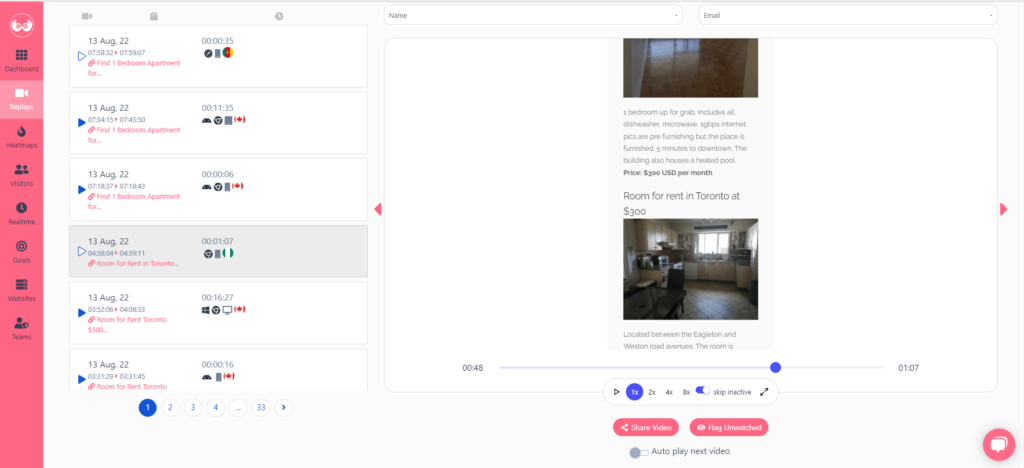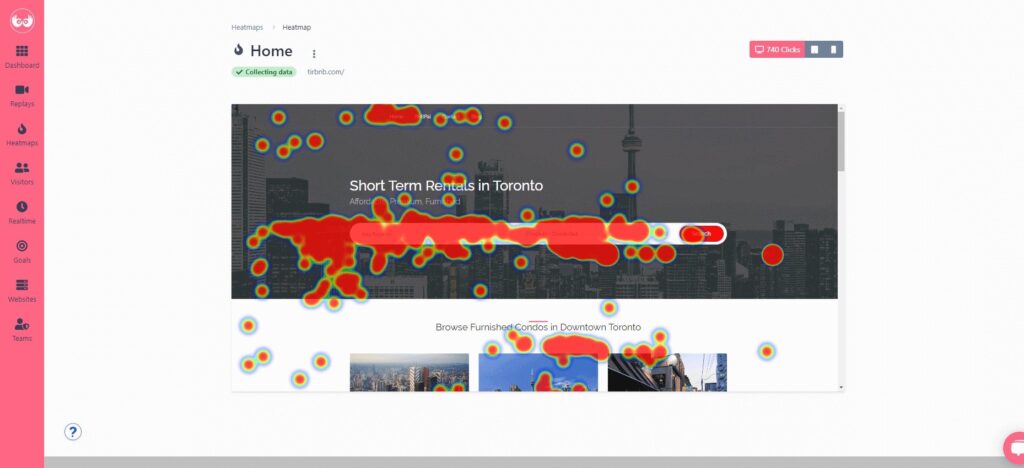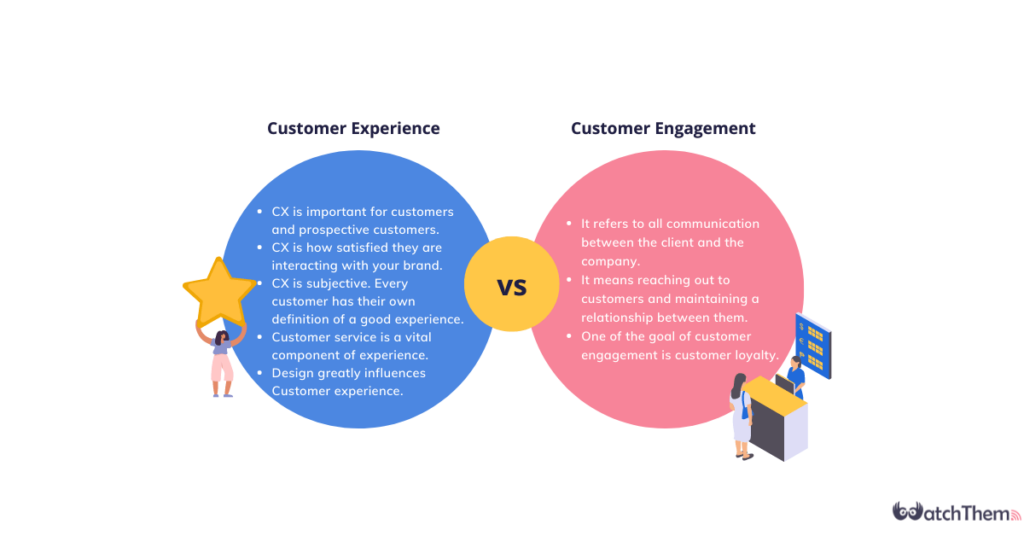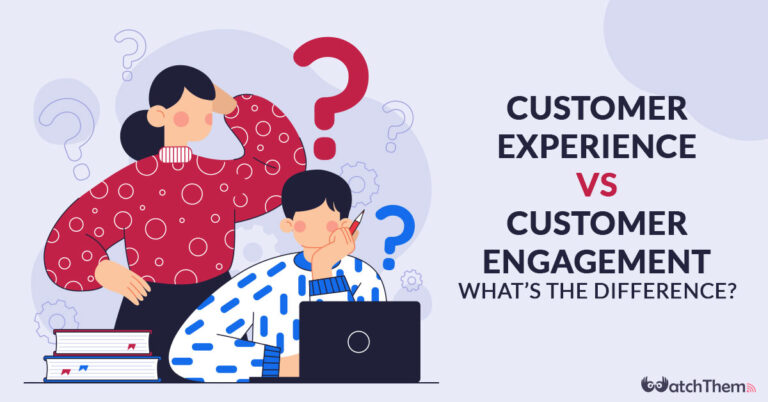Page Contents
Superior customer experience is regarded as the heart of every successful business. According to studies, a customer that is totally engaged with a specific company is likely to generate 23% more revenue than a customer who feels less connected to that company. So, customer experience and engagement are actually two different things, but they are interrelated. Although there is a lot of confusion about the meaning of each term, we’ll demystify the differences between customer experience and customer engagement in this article.
Note: WatchThedmLive is the best and the handiest way to deliver an exceptional customer experience. Stay tuned to see how!
What Is Customer Experience and Why Does It Matter?
Before discussing customer experience vs. customer engagement, let’s take a deeper look at each term. In business, customer experience encompasses all the interactions a customer has with a company. It includes all the pre and post-steps a customer takes from making a purchase to how they are treated when they call customer service. Providing a remarkable customer experience has several advantages for growing your business. Although high-quality products and services, price, and customer service are important factors, customers are willing to pay more money in exchange for an excellent customer experience. And it can lead to customer loyalty. Look deeper into CX examples for better understanding.
What Is Customer Engagement and Why Does It Matter?
In a world where the customer is always right, businesses must work hard to ensure they are engaging with their customers in the most effective way possible. But what exactly is customer engagement?
Customer engagement can be defined as the level of interaction between the customer and an organization. This can be measured in many ways, including how often customers interact with a company, how long they spend interacting with a company, and how satisfied they are with those interactions.
There are many benefits to having high levels of customer engagement. For one, it can lead to increased sales and loyalty from customers. In addition, it can also help businesses gather valuable feedback about their products or services. Finally, happy customers are more likely to tell others about their positive experiences, which can help generate new leads for a business.
How to Improve Customer Experience and Engagement
One of the most effective ways to improve your CX is to use a behavior analytics tool like WatchThemLive which has many useful features such as session recording and heatmaps. Look at the video below to get a deeper insight into its features:
Youtube video
Session Recording
Session recording is a process of tracking all user interactions on a website. This provides valuable insights into how customers interact with a company’s digital products and services. There are many benefits of session recording, including:
1. Improving Customer Support
Session recordings can be used to help you resolve customer issues by providing visual evidence of the problem. This can help reduce frustration on both the customer and support team sides.
2. Identifying Usability Issues
If there are patterns of user behavior that indicate confusion or difficulty using a product, session recordings can help pinpoint where these issues are occurring. Then, this information can be used to make design and UX changes to improve the overall experience for users.


Heatmaps
In recent years, heatmaps have become increasingly popular among web designers and UX professionals as a way to track and improve customer experience (CX). While there are many different types of heatmaps, they all work by tracking user interactions with a website or app and then visualizing that data in the form of a heat map.
Heatmaps are a valuable tool for UX professionals because they can help identify problem areas on a website or app, such as areas where users are struggling to click on buttons or links. They can also be used to track the most popular areas of a site or app, which can be useful for design changes or optimization. Additionally, heatmaps can be used to monitor user engagement over time, which can help identify trends and patterns.


So WatchThemLive’s session recording and heatmaps can be very helpful for any marketer or UX designer. Sign up before your competitors take the stage.
What Are the 7 Main Components of Customer Experience?
In today’s competitive marketplace, customer experience is a top priority for many businesses. Here are seven main components of customer experience you should know:
1. CX Programs
A cx program is a customer experience program that is implemented by businesses to make your organization more customer-centric and improve customer satisfaction. The program encompasses all the tools, techniques, strategies, and initiatives that are aligned with creating a positive customer experience that will encourage customers to continue doing business with the company. To achieve this, businesses must focus on every touchpoint in the customer journey and take steps to improve each one.
2. CX Strategy
A company’s customer experience strategy is its plan and system for delivering an exceptional customer experience. This encompasses everything from how customers are greeted and treated to the overall design of the company’s products and services. Creating a great customer experience requires a deep understanding of who your customers are and what they value. It also necessitates having the right systems and processes in place to support your vision. But perhaps most importantly, it takes a commitment from everyone in the organization to put the customer first. When done well, cx strategy can be a powerful differentiator that inspires loyalty and advocacy.
3. Customer Engagement
In its simplest form, customer engagement is the level of interaction and connection that a company has with its customers through various online and offline channels. This can be measured by things like loyalty, satisfaction, and advocacy. But in today’s age of digital transformation in the insurance industry, companies need to go beyond these traditional measures and really focus on creating two-way relationships with their customers.
It’s not enough to just provide your customers with a great product or service, you also need to create an engaging experience that will keep them coming back for more. This means proactively reaching out to them, understanding their needs and wants, and constantly seeking ways to improve the relationship. It’s about building trust and showing that you care about more than just making a sale.
4. Customer Journey
In business, the customer journey refers to the steps a potential customer takes to become a paying customer of a company. The customer journey typically begins with awareness, followed by interest, consideration, and finally purchase. However, the customer journey doesn’t end there. After purchase, customers enter into the loyalty stage, during which they may continue to do business with a company or brand and recommend its products or services to others.
5. Customer Touchpoint
A touchpoint is anyway a customer can interact with a company, usually during the customer’s journey towards becoming a paying customer. Touchpoints are plotted customer journey. A few examples of touchpoints are visiting a company’s website, speaking to customer service, or reading reviews about the company.
Companies need to understand what their touchpoints are because they can use this information to improve customer experience (CX). By understanding how customers interact with their brand, companies can make sure that each touchpoint is positive and helpful. This will keep customers happy and more likely to continue doing business with the company.
There are many ways to collect data on touchpoints, but one of the most effective is through surveys. Asking customers about their experiences at each stage of their journey can help companies identify areas where they need to make improvements.
6. Customer Service Training
According to CX stats, 93% of customers are likely to make repeat purchases with companies that offer excellent customer service. Customer service training is a process used to help customer-facing employees learn the skills and knowledge necessary to provide effective customer service. Customer service training can cover a wide range of topics, from basic communication skills to more advanced problem-solving techniques.
7. Customer Feedback
According to online review statistics, nine out of ten customers read reviews before buying a product. Customer feedback is the bread and butter of customer experience (CX). It provides the information businesses need to improve their products, services, and overall experience.
There are many ways to collect customer feedback, but the most important thing is to make sure you’re collecting it regularly. The best way to do this is to integrate it into your product or service so that it’s easy for customers to provide their input.
Customer feedback is essential for businesses that want to improve their CX. It provides valuable insights that can help businesses make changes that will improve the customer experience.
What Are the Three Characteristics of Customer Engagement?
There are many characteristics of customer engagement, but some important ones are creating a connection, being responsive, and being proactive.
Creating a connection with customers is one of the most important aspects of customer engagement. This connection can be created in many ways, such as through effective communication, providing excellent customer service, and developing a rapport with customers.
Being responsive to customer needs is another key characteristic of customer engagement. This means being available to customers when they need assistance and quickly addressing any issues or concerns they may have. Proactively reaching out to customers can also show that you’re responsive and care about their experience.
Finally, being proactive is another key characteristic of customer engagement. This means taking steps to prevent problems from occurring and anticipating what customers might need or want.
What Is the Difference between Customer Engagement and Customer Experience?


In the business world, the terms customer engagement and customer experience are often used interchangeably. However, there is a big difference between the two concepts.
Customer engagement refers to the interactions between a company and its customers. This can include everything from making a purchase to leaving a review.
Customer experience, on the other hand, is the sum of all touchpoints a customer has with a company. This could be anything from how easy it is to find contact information on a website to how satisfied they are with their purchase.
Companies need to understand the difference between customer engagement and customer experience because they need different strategies to improve them. For example, you might use social media to increase customer engagement, but you might use surveys to improve the customer experience.
Conclusion
In conclusion, it is important to understand the difference between customer experience and customer engagement. Customer experience is the overall feeling a customer has when interacting with a company. Customer engagement, on the other hand, is a measure of how involved and invested a customer is with a company. While both are important, customer engagement is a more accurate predictor of customer loyalty and long-term success. Meanwhile, WatchThemLive will be there for you to increase customer engagement and improve customer experience. Give it a try and sign up.

